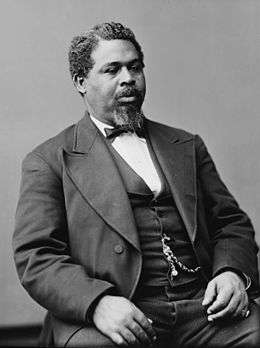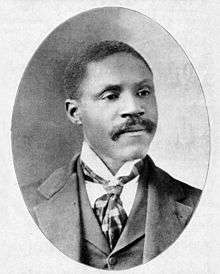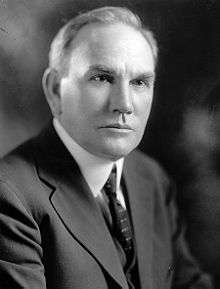South Carolina's 7th congressional district
| South Carolina's 7th congressional district | ||
|---|---|---|
.tif.png) | ||
| Current Representative | Tom Rice (R–Myrtle Beach) | |
| Cook PVI | R+7 | |
The 7th Congressional District of South Carolina is a congressional district for the United States House of Representatives in South Carolina, established in 2011 following apportionment of another seat to the state following the 2010 census. It includes all of Chesterfield, Dillon, Georgetown, Horry, Marlboro and Marion counties and parts of Florence and Lee counties. The first US representative from this new district, Tom Rice, was elected in 2012 and took office on January 3, 2013.
History
The 7th Congressional District of South Carolina existed in the 19th century but it was eliminated in 1853 as a result of the 1850 Census. After the 1880 Census, Congress apportioned the state another seat, and the state legislature re-established the district.
By that time, the Reconstruction era had ended and the state legislature was controlled by white conservative Democrats, who wrested control by a mixture of violence and fraud. They defined the boundaries of the 7th district, which was called the "shoestring district" because of its long, narrow shape that included many black precincts. In 1892 and 1894 the majority-black voters of the district elected George W. Murray to Congress; he was the only African American to serve in Congress in those sessions and, following disfranchisement and demographic changes, the last elected from the state until Jim Clyburn in 1992.
In 1895, the Democrat-dominated state legislature passed a new constitution, disfranchising black voters by changes to voter registration and electoral rules that were applied against them in a discriminatory way. For decades after 1896, only white Democrats were elected to Congress from the state. (Such disfranchisement occurred among all the states of the former Confederacy, and their use of poll taxes, literacy tests, grandfather clauses, and white primaries survived several US Supreme Court challenges.)
During the first half of the 20th century, 6.5 million blacks in total left South Carolina and other southern states in the Great Migration to the North, Midwest and West. Following cumulative declines in state population, after the 1930 Census, South Carolina lost a seat and the 7th district was eliminated in redistricting. It was last represented by Democrat Hampton P. Fulmer, who was redistricted into the 2nd District.
South Carolina had only six districts for the next 80 years. African Americans were effectively barred from voting until after passage of the Voting Rights Act of 1965. Increases in population led to the state's receiving another congressional seat following the 2010 Census.
The 7th district is located in the rapidly developing area of northeastern South Carolina, including the Myrtle Beach metropolitan area (the Grand Strand) and the Pee Dee region.[1][2] It is a white-majority district and its voters elected Republican Tom Rice as US Representative from the district in 2012; he took office in January 2013, when the 113th Congress convened. Due almost entirely to the presence of heavily Republican Horry County, which has as many people as the rest of the district combined, it tilts Republican.
The district boundaries are roughly similar to the configuration of the 6th congressional district before it was reconfigured after the 1990 census as a black-majority district.
List of representatives
| Name | Tenure | Party | Electoral history | |
|---|---|---|---|---|
| District created in 1803 | ||||
 Thomas Moore Thomas Moore |
March 4, 1803 – March 3, 1813 |
Democratic- Republican |
Redistricted from the 6th district | |
 Elias Earle Elias Earle |
March 4, 1813 – March 3, 1815 |
Democratic- Republican |
Redistricted from the 8th district | |
 John Taylor John Taylor |
March 4, 1815 – March 3, 1817 |
Democratic- Republican |
[Data unknown/missing. You can help!] | |
 Elias Earle Elias Earle |
March 4, 1817 – March 3, 1821 |
Democratic- Republican |
[Data unknown/missing. You can help!] | |
 John Wilson John Wilson |
March 4, 1821 – March 3, 1823 |
Democratic- Republican |
Redistricted to the 6th district | |
 Joseph Gist Joseph Gist |
March 4, 1823 – March 3, 1825 |
Jackson Republican |
Redistricted from the 8th district | |
| March 4, 1825 – March 3, 1827 |
Jacksonian | |||
 William T. Nuckolls William T. Nuckolls |
March 4, 1827 – March 3, 1833 |
Jacksonian | [Data unknown/missing. You can help!] | |
 William K. Clowney William K. Clowney |
March 4, 1833 – March 3, 1835 |
Nullifier | [Data unknown/missing. You can help!] | |
 James Rogers James Rogers |
March 4, 1835 – March 3, 1837 |
Jacksonian | [Data unknown/missing. You can help!] | |
 William K. Clowney William K. Clowney |
March 4, 1837 – March 3, 1839 |
Nullifier | [Data unknown/missing. You can help!] | |
 James Rogers James Rogers |
March 4, 1839 – March 3, 1843 |
Democratic | [Data unknown/missing. You can help!] | |
 Robert B. Rhett Robert B. Rhett |
March 4, 1843 – March 3, 1849 |
Democratic | Redistricted from the 2nd district | |
 William F. Colcock William F. Colcock |
March 4, 1849 – March 3, 1853 |
Democratic | [Data unknown/missing. You can help!] | |
| District eliminated in 1853 | ||||
| District re-established in 1883 | ||||
 Edmund W.M. Mackey Edmund W.M. Mackey |
March 4, 1883 – January 27, 1884 |
Republican | Redistricted from the 2nd district Died | |
 Robert Smalls Robert Smalls |
March 18, 1884 – March 3, 1887 |
Republican | [Data unknown/missing. You can help!] | |
 William Elliott William Elliott |
March 4, 1887 – September 23, 1890 |
Democratic | Lost contested election | |
 Thomas E. Miller Thomas E. Miller |
September 24, 1890 – March 3, 1891 |
Republican | Won contested election | |
 William Elliott William Elliott |
March 4, 1891 – March 3, 1893 |
Democratic | [Data unknown/missing. You can help!] | |
 George W. Murray George W. Murray |
March 4, 1893 – March 3, 1895 |
Republican | Won contested election of 1894, finally seated in 1896 | |
 J. William Stokes J. William Stokes |
March 4, 1895 – June 1, 1896 |
Democratic | Seat declared vacant while being contested because of Democratic election fraud | |
| November 3, 1896 – July 6, 1901 |
Died | |||
 Asbury F. Lever Asbury F. Lever |
November 5, 1901 – August 1, 1919 |
Democratic | Resigned to become member of Federal Farm Loan Board | |
 Edward C. Mann Edward C. Mann |
October 7, 1919 – March 3, 1921 |
Democratic | [Data unknown/missing. You can help!] | |
 Hampton P. Fulmer Hampton P. Fulmer |
March 4, 1921 – March 3, 1933 |
Democratic | Redistricted to the 2nd district | |
| District eliminated in 1933 | ||||
| District re-established in 2013 | ||||
 Tom Rice Tom Rice |
January 3, 2013 – Present |
Republican | Incumbent | |
References
- ↑ "Census 2010 shows Red states gaining congressional districts". Washington Post. Retrieved 2010-12-21.
- ↑
- Martis, Kenneth C. (1989). The Historical Atlas of Political Parties in the United States Congress. New York: Macmillan Publishing Company.
- Martis, Kenneth C. (1982). The Historical Atlas of United States Congressional Districts. New York: Macmillan Publishing Company.
- Congressional Biographical Directory of the United States 1774–present
| ||||||
Coordinates: 34°07′N 79°21′W / 34.11°N 79.35°W